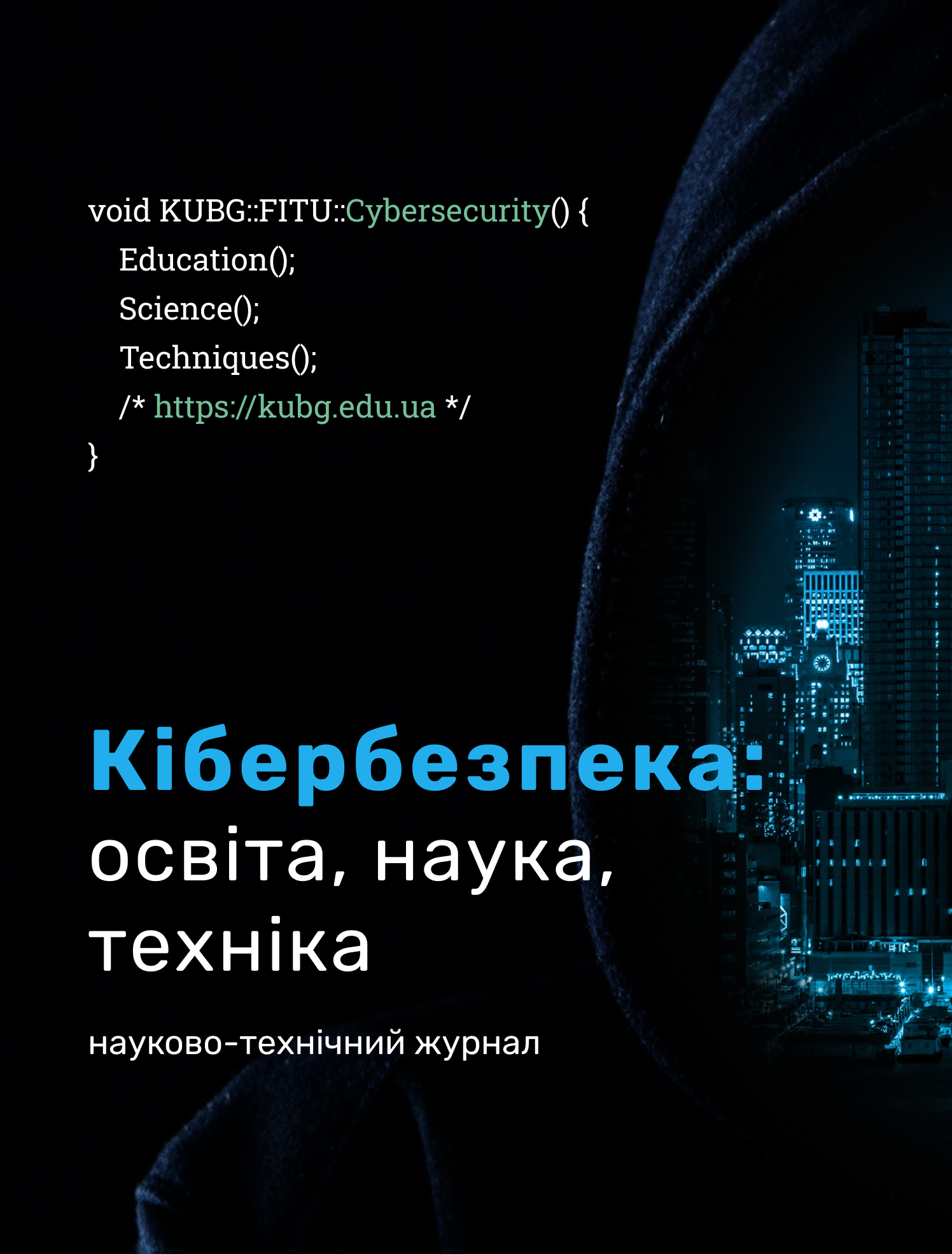THREATS AND RISKS OF THE USE OF ARTIFICIAL INTELLIGENCE
DOI:
https://doi.org/10.28925/2663-4023.2023.22.618Abstract
The article analyzes the advantages of using Artificial Intelligence (AI) in various fields and the risks of impact on the performance of information security and cyber security tasks, as integral components of national security. It was determined that the development of AI has become a key priority for many countries, and at the same time, questions have arisen regarding the safety of this technology and the consequences of its use. The expansion of the scope of application of AI to critical infrastructure objects, the difficulty of verifying the information resources and solutions created by these systems, the threat of a dangerous impact of the results of their operation on the safety of people, society and the state leads to the emergence of risks associated with the use of AI. The lack of transparent methods for checking the conclusions and recommendations of the proposed SSI is a source of uncertainty regarding their accuracy and practical value. This effectively means that SSI can be part of a set of information warfare measures aimed at spreading dubious unverified information and common fakes. The use of artificial intelligence technology can improve the level of computer security. The paper considers the mechanism of risk assessment from the use of AI in various industries and methods of their processing. Proposed approaches to the use of artificial intelligence systems for identification and assessment of risks that arise as a result of the use of artificial intelligence systems. Artificial intelligence plays a key role in ensuring national security, and its application in various industries contributes to improving efficiency, however, there is an urgent need to develop risk assessment mechanisms for the use of artificial intelligence systems.
Downloads
References
Bagchi, S., & US, T. C. (2023). Why We Need to See Inside AI's Black Box. Scientific American. https://www.scientificamerican.com/article/why-we-need-to-see-inside-ais-black-box/
Auchard, E., & Ingram, D. (2018). Cambridge Analytica CEO claims influence on U.S. election, Facebook questioned. Reuters. https://www.reuters.com/article/us-facebook-cambridge-analytica-idUSKBN1GW1SG
Pause Giant AI Experiments: An Open Letter - Future of Life Institute. (2023). Future of Life Institute.https://futureoflife.org/wp-content/uploads/2023/05/FLI_Pause-Giant-AI-Experiments_An-Open-Letter.pdf.
Abdullah, M. F., & Ahmad, K. (2013). The Mapping Process of Unstructured Data to Structured Data. 3rd International Conference on Research and Innovation in Information Systems (ICRIIS), 151–155. https://doi.org/10.1109/ICRIIS.2013.6716700
Abdullah, M. F. & Ahmad, K. (2015). Business Intelligence Model for Unstructured Data Management. 5th International Conference on Electrical Engineering and Informatics, 473–477. https://doi.org/10.1109/ICEEI.2015.7352547
Venieris, S.; Bouganis, C., & Lane, N. (2023). Multiple-Deep Neural Network Accelerators for Next-Generation Artificial Intelligence Systems. Computer, 56(3), 70–79. https://doi.org/10.1109/MC.2022.3176845
Xing, J. (2019). The Application of Artificial Intelligence in Computer Network Technology in Big Data Era. 4th International Workshop on Materials Engineering and Computer Sciences, 211–215. https://doi.org/10.25236/iwmecs.2019.044
Bian, L. (2023). Design of Computer Network Security Defense System Based on Artificial Intelligence and Neural Network. Wireless Personal Communications. https://doi.org/10.1007/s11277-023-10721-9
Grechaninov, V., et al. (2022). Formation of Dependability and Cyber Protection Model in Information Systems of Situational Center. Emerging Technology Trends on the Smart Industry and the Internet of Things, 3149, 107–117.
Hulak, H., et al. (2020). Cryptovirology: Security Threats to Guaranteed Information Systems and Measures to Combat Encryption Viruses. Cybersecurity: Education, Science, Technique, 2(10), 6–28. https://doi.org/10.28925/2663-4023.2020.10.628
Moskalenko, V.; Kharchenko, V.; Moskalenko A., &; Kuzikov, B. (2023). Resilience and Resilient Systems of Artificial Intelligence: Taxonomy, Models and Methods. Algorithms, 16(3) 165. https://doi.org/10.3390/a16030165
EU Legislation in Progress. Artificial intelligence act (2023). https://www.europarl.europa.eu/RegData/etudes/BRIE/2021/698792/EPRS_BRI(2021)698792_EN.pdf
Artificial Intelligence Risk Management Framework (2023). https://doi.org/10.6028/NIST.AI.100-1.
The Artificial Intelligence Index 2023 Annual Report: AI Index Steering Committee (2023). Institute for Human-Centered AI, Stanford University.
Satter, R. (2023). Exclusive: AI being used for hacking and misinformation, top Canadian cyber official says. Reuters. https://www.reuters.com/technology/ai-being-used-hacking-misinfo-top-canadian-cyber-official-says-2023-07-20
Sly, L. (2018). U.S. soldiers are revealing sensitive and dangerous information by jogging. Washington Post. https://www.washingtonpost.com/world/a-map-showing-the-users-of-fitness-devices-lets-the-world-see-where-us-soldiers-are-and-what-they-are-doing/2018/01/28/86915662-0441-11e8-aa61-f3391373867e_story.html
Rahman, M., et al. (2023). Security Risk and Attacks in AI: A Survey of Security and Privacy. 47th IEEE-Computer-Society Annual International Conference on Computers, Software, and Applications (COMPSAC), 1834–1839. https://doi.org/10.1109/COMPSAC57700.2023.00284
Data Poisoning and Its Impact on the AI Ecosystem (2023). https://themathcompany.com/blog/data-poisoning-and-its-impact-on-the-ai-ecosystem
Zhu, Y. (2023). Online data poisoning attack against edge AI paradigm for IoT-enabled smart city. Mathematical Biosciences And Engineering. 20(10),17726–17746. https://doi.org/10.3934/mbe.2023788
Knight W. (2023). The AI-Powered, Totally Autonomous Future of War Is Here. WIRED. https://www.wired.com/story/ai-powered-totally-autonomous-future-of-war-is-here/
Can you trust ChatGPT’s package recommendations? (2023). Vulcan Cyber. https://vulcan.io/blog/ai-hallucinations-package-risk
SE “Ukrainian research and training center for problems of standardization, certification and quality” (2018). Risk management. Principles and guidelines (31000:2018).
Barafort, B.; Mesquida, A. & Mas, A. (2019). ISO 31000-based integrated risk management process assessment model for IT organizations. Journal Of Software-Evolution And Process, 31(1). https://doi.org/10.1002/smr.1984
Published
How to Cite
Issue
Section
License
Copyright (c) 2023 Олексій Скіцько, Павло Складанний, Роман Ширшов, Михайло Гуменюк, Максим Ворохоб

This work is licensed under a Creative Commons Attribution-NonCommercial-ShareAlike 4.0 International License.




